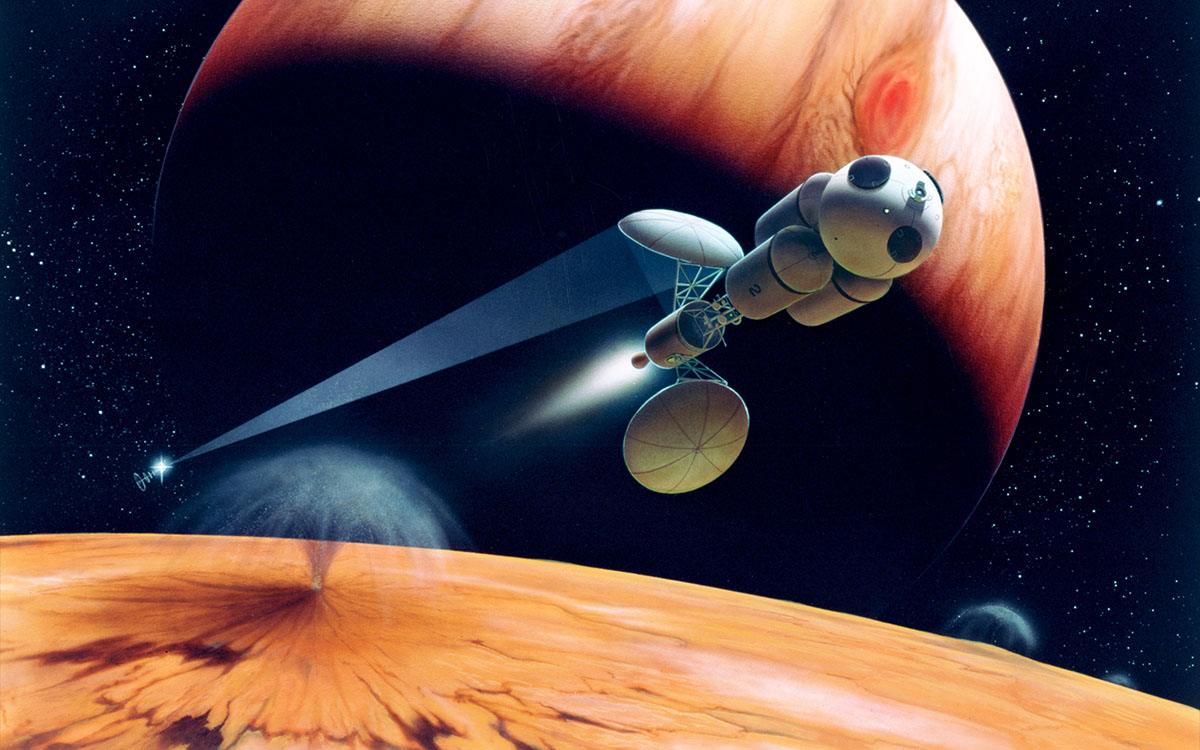surfing the light fantastic: how nanoscale etchings could revolutionize solar sails

One of the leading concepts for a mission to the nearest solar system involves a tiny spacecraft propelled by a giant laser firing at its solar sail. Aside from the issues with building an interstellar death ray, it’s actually a great idea because it saves precious mass by not requiring the craft to carry any fuel. Now, a new experiment by researchers at Caltech could take that concept even further. The trick is to create nanoscale patterns in objects you want to manipulate, allowing them to focus photons to create consistent pressure across their surface. In space, this would become thrust, allowing a steady light source to accelerate a spaceship with solar sails etched for optimal light absorption even as is flies well beyond the Moon.
Normally, if you want a rocket to propel a spaceship quickly enough to travel between planets, if not stars, you need that rocket to go fast. If you want a rocket to go fast, it needs to accelerate for a long time. And if you need it to accelerate for a long time, you need a lot of fuel to burn. If you need a lot of fuel, you’re adding a lot of mass, possibly enough mass to ground your launch vehicle for good. Of course, there are other ways to accelerate, but they will generally only work in a vacuum, providing far from sufficient trust in an atmosphere, and require at least some fuel onboard. We’re going to need chemical rockets to haul things into orbit, but if we want to go to other worlds quickly, we can’t rely on them to do much of the work like we do today.
Solar sails allow you the flexibility of launching conventionally and placing a larger ship into orbit, then accelerating it from Earth, or better yet, nearby satellites capable of focusing light from the Sun to give spacecraft a boost or slow them down to orbital velocity on approach. We knew this would work for decades, but we also know that the further away from a light source our ships got, the less of a push they’ll get. Every time its distance from the source doubles, it will receive just a fourth of the photons. Worse yet, if our aim was off, we could send it tumbling through space. This is why nano-etchings could be such a boon to space travel.
By giving a sail more surface area and a design that can stabilize it, they would allow the source to be more efficient and impart more pressure for longer. Of course, this doesn’t mean that we can start plotting a course to Proxima Centauri just yet. Our hypothetical spacecraft will need to carefully control its speed as not to whiz by a planet or moon to which it was headed, or slam into it at full speed. It would need to flip its sails and receive a burst of light to slow down, like a rocket firing its retro thrusters. Unless you’ve already set this infrastructure up on an exoplanet, it will need another way to slow down. And if you venture too far from the Sun, its light becomes too diffuse, requiring other propulsion methods to maneuver.
But again, we’re not there yet. Right now, we’re just trying to find the best way to get around the solar system quickly and efficiently, and solar sails are a terrific way to do just that, especially if the ramped up tests of nano-etchings prove successful on further study. We could even imagine using them alongside solar panels on ships like the BFR and inflatable space stations we could refashion into massive cargo and transport vehicles. All of this will take a lot of work and a lot of prototyping and testing, but with such encouraging hints about how powerful solar sails could be for routine space exploration in our solar system should give us plenty of motivation to start the necessary work.
See: Ognjen, I., Atwater, H., Self-stabilizing photonic levitation and propulsion of nanostructured macroscopic objects. Nature Photonics (2019), DOI: 10.1038/s41566-019-0373-y





